#Geri Miller
Text




Warhol Superstars Geri Miller and Eric Emerson photographed by Andy Warhol, 1973.
87 notes
·
View notes
Text


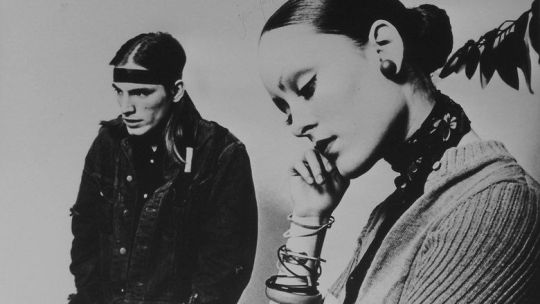
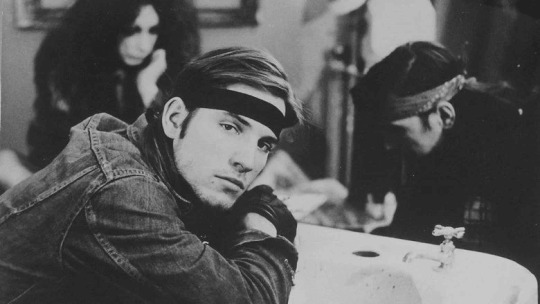
Trash (1970)
#trash#trash 1970#movies#paul morrissey#70s#1970s#pics#soupy's#joe dallesandro#jane forth#holly woodlawn#geri miller#actors#b/w
216 notes
·
View notes
Text
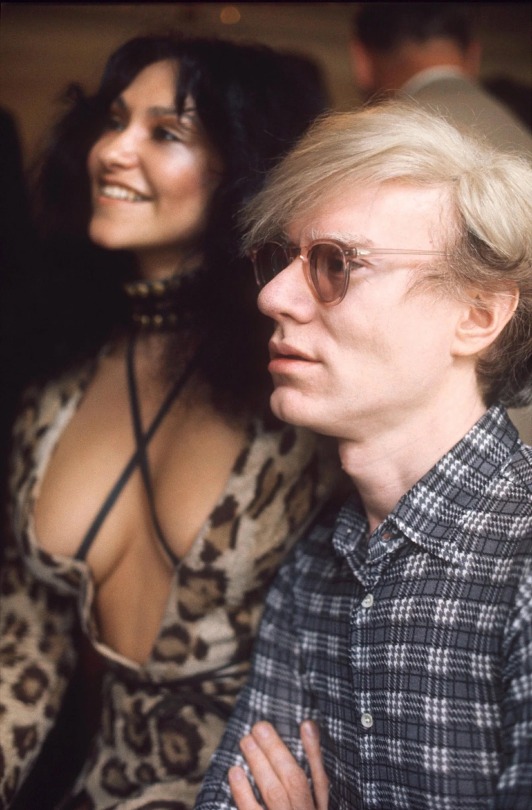
Andy Warhol with Geri Miller, who played Josie in his play Pork, during a news conference at the Ritz Hotel in London, 1971
66 notes
·
View notes
Text

Cynthia Lennon, John Lennon, Ringo Starr and Geri Miller at the Peppermint Lounge after The Beatles performed on The Ed Sullivan Show on February 9, 1964🌻🌻🌻
Geraldine Miller was born on April 27, 1942 in Clifton, New Jersey. After graduating from high school in 1960, she became a go-go dancer in New York City, working at clubs Peppermint Lounge and Carnival for many years. She met The Beatles at the Peppermint Lounge on February 9, 1964 and after her shift took a break, Geri continued to dance and hung out with Ringo until he had to go and she had to go back to work. Geri invited him to her apartment - he came before she got home and was with her until 7 AM for breakfast until Ringo had to go back to the hotel (it's been said they dated twice). Once referring herself as a Super Groupie, Geri was with Rod Richards from Rare Earth, James Brown, and hung out with Lou Reed, Mick and Bianca Jagger. By 1968, Geri then became part of Andy Warhol's entourage, working as an actress in his movies. She later married music producer Jimmy Miller (no relation) and was a mother of two children, Steven and Michael, before passing away from breast cancer in 1991🌻🌻
Via @thebeatleswomen on Instagram🌻
#60s icons#girlsofthesixties#60s couples#the beatles wives#john lennon#cynthia lennon#john and cyn#ringo starr#geri miller#peppermint lounge#1964
19 notes
·
View notes
Video
vimeo
Enjoy this comdedy comilation from @walkergifs on twitter! (source)
#walker#crack#walker gifs#cordell walker#micki ramirez#larry james#trey barnett#bonham walker#abeline walker#hoyt rawlin#liam walker#stella walker#geri broussard#august walker#emily walker#cassie perez#todd#dan miller#colton davidson#kevin golden#trevor strand#denise davidson#gale davidson
21 notes
·
View notes
Text
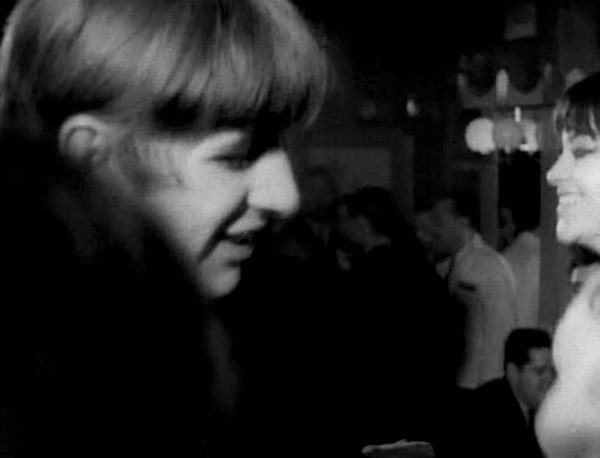
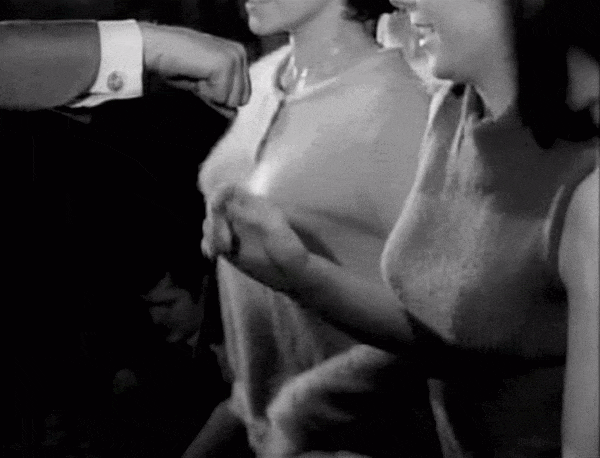

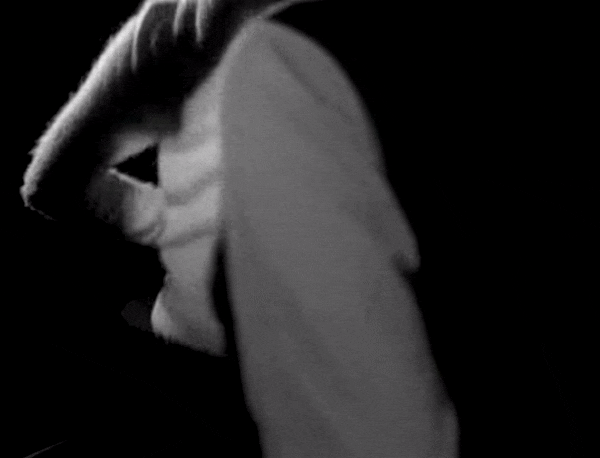


Ringo Starr dancing with Murray the K and getting fought over by girls (including dancer Geri Miller), the Peppermint Lounge in New York, 9th February 1964
#obsessed with girl no.2 fending off girl no.3#and girl no.1 finally succeeding in shaking off murray the k and landing ringo#I just want to know what she nearly got him to agree to at the end there#ringo starr#murray the k#the beatles#the first u.s. visit#february 1964#javelin's gifs#javelin’s gifs: 1964#it was sixty years ago today
219 notes
·
View notes
Text
"Dedim, kendine
dargın yürümektir insan, yürüyorum
diye yolda kalmamış sananların
arasından..”
Beethoven, büyük bir ruh hekimi, devasa bir paratoner. Güneşle birlikte hareket eden bir günebakandı üstelik; ışığı içiyordu her zaman ışıl ışıl, hayat doluydu. Ne iyimserdi ne de karamsar, okyanus için ne kadar iyi ya da kötü denebilirse o da öyleydi. İnsan ırkına inanıyordu. Saygınlığını, gücünü ve yaratma ihtiyacını geri kazandırarak insan ırkına bir santim ekledi. Her şeyi yaratı olarak görüyordu, güneşe özgü bir mutluluk olarak. Gördüklerini yazarak değil, müzikle kaydediyordu.
Henry Miller, Oğlak Dönencesi
49 notes
·
View notes
Text
sana karşı koyamıyorum. aynı anda hem ilerlemek hem de geri çekilmek istiyorum.
henry miller - love letters
#henry miller#love letters#aşk mektupları#yengeç dönencesi#seksus#uykusuz#insomnia#kitap#edebiyat#blogger#felsefe#kitaplar#blog#kitap kurdu#poems#konstantin kavafis#abelard heloise#william shakespeare#hamlet#on ikinci gece#tiyatro#beyaz geceler#orhan pamuk#anna ahmatova#anna karenina#madame bovary#küçük prens#sigmund freud#ölüler böyle sever#charles bukowski
25 notes
·
View notes
Photo

The dapper and sagacious Ahmad Jamal may have looked more like a UN delegate than a jazz musician, but he was recognised as a truly great jazz artist by some of the music’s most notable pioneers. Jamal, who has died aged 92, was hailed in the 1940s and 50s by Art Tatum and Miles Davis, and more recently by McCoy Tyner and Keith Jarrett. In the 90s, when a jazz piano-trio renaissance was being led by gifted newcomers such as Brad Mehldau, Jason Moran, Geri Allen and Esbjörn Svensson, Jamal did not retire to the sidelines but played better than ever. The former Wynton Marsalis pianist and composer Eric Reed has said that Jamal is to the piano trio “what Thomas Edison was to electricity”.
He was a fascinating philosopher of contemporary music and a lifelong critic of the entertainment business, which he accused of fleecing African-American artists. Although he recognised the structural and technical distinctions of jazz and European classical music, he was adamant that there was no superiority of one over the other in what he called “the emotional dimensions”. “You have to know what the hell you’re doing,” he told me in 1996, “whether you’re playing the body of work from Europe or the body of work from Louis Armstrong.”
Jamal was born Frederick Jones in Pittsburgh, Pennsylvania, and regarded the eclectic musical culture of his birthplace as crucial to his development. His father was an open-hearth worker in the steel mills, but his uncle Lawrence played the piano and at only three years old Jamal was copying his playing by ear. He took lessons from seven, and would recall “studying Mozart along with Art Tatum”, unaware of white society’s widespread prejudice that European music was supposed to be superior to that of African-Americans. Significant influences in his early years were the music teacher Mary Cardwell Dawson (founder of the National Negro Opera Company), and his aunt Louise, who showered him with sheet music for the popular songs of the day. Pianists Tatum, Nat King Cole and Erroll Garner were among the young “Fritz” Jones’s principal jazz influences, and he also studied piano with James Miller at Westinghouse high school.
At 17 he toured with the former Westinghouse student George Hudson’s Count Basie-influenced orchestra, worked in a song-and-dance team, and wrote one of his most enduring themes, Ahmad’s Blues, at 18. Two years later he adopted Islam, and the name Ahmad Jamal. He also joined a group called the Four Strings, which became the Three Strings with the departure of its violinist, and caught the ear of the talent-spotting producer John Hammond, who signed the trio to Columbia’s Okeh label.
The public liked Jamal’s distinctive treatments of popular songs, and so did Davis. Developing his new quintet in 1955, Davis sent his rhythm section to study Jamal’s then drummer-less group. Davis liked Jamal’s pacing and use of space (the prevailing bebop jazz style was usually hyperactive), and he noticed that Jamal’s guitarist, Ray Crawford, often tapped the body of his instrument on the fourth beat. Davis told his drummer, Philly Joe Jones, to copy the effect with a fourth-beat rimshot, which became a characteristic sound of that ultra-hip Davis ensemble. Davis began to feature Jamal’s originals and arrangements in his own output, including New Rhumba (on his 1957 Miles Ahead collaboration with Gil Evans), and Billy Boy (on 1958’s classic Milestones session).
The gifted young Chicago bassist Israel Crosby joined the trio in 1955, and the following year the percussionist Vernel Fournier – who fulfilled Jamal’s requirements for a subtle hand-drummer as well as orthodox sticks-player – replaced Crawford. The group became the house band at the Pershing Hotel in Chicago, and one night in January 1958 they recorded more than 40 tracks there. One was Poinciana, which had been a hit tune from the 1952 movie Dreamboat. Jamal modernised its Latin groove, maintained a catchy hook throughout the improvisation, and found himself with a pop hit that stayed in the charts for two years.
Eight songs from that night, including Poinciana, made up the million-selling album At the Pershing: But Not for Me. Jamal’s newfound wealth led him to branch out into club ownership by opening the Alhambra in Chicago, though the venture barely lasted a year. Crosby and Fournier left for the pianist George Shearing’s group in 1962, and Jamal recorded the Latin-influenced Macanudo album the next year, with a new trio and a full orchestra. He also explored his cultural and ancestral roots in Africa, then recorded Heat Wave in 1966 – with a new group (Jamil Nasser on bass and Frank Gant on drums) and a more contemporary feel, reflected in the funkier approach to his old piano hero Garner’s Misty.
Jamal’s knack of keeping audiences mesmerised with unexpected modulations, time changes and catchy riffs, while never losing the undercurrent of the tune, was still unmistakably intact. His trademark device of insinuating a song – through toying with its bassline or its characteristic groove, but endlessly delaying the appearance of the tune – was adopted by many later jazz pianists, including such contemporary masters as Mehldau.
In 1970 Jamal recorded Johnny Mandel’s M*A*S*H theme for the movie’s soundtrack, and with the albums Jamaica (in 1974, which included Marvin Gaye’s Trouble Man as well as M*A*S*H) and Intervals (1979, which included a Steely Dan cover), showed he was not averse to toying with pop forms and even electric pianos. But he soon returned to the jazz of his roots. In 1982 he made the live album American Classical Music (it was the term he always preferred to the word “jazz”), sustained a steady output through the decade, and with Chicago Revisited (1992) sounded as assured and inventive as ever.
Now in his 60s, Jamal began to develop a higher profile in Europe. Sessions for the Dreyfus label in France led to The Essence (issued in three parts in the 90s), and found him in full flight with the saxophonists George Coleman and Stanley Turrentine and the trumpeter Donald Byrd. In 1995 his version of Music, Music, Music and the original take of Poinciana were featured in the Clint Eastwood film The Bridges of Madison County. He made what he regarded as one of his best recordings with Live in Paris 1996 (featuring Coleman again), and returned to the city to celebrate his 70th birthday in 2000 with Coleman; he was in inspired form on what would be released as the album A l’Olympia (2001).
With the exciting James Cammack on bass and Idris Muhammad on drums, Jamal’s composing blossomed. Striking originals dominated his 2003 album In Search of Momentum, and he even made a faintly stagey but soulful foray into singing, amid a raft of virtuoso keyboard displays, on After Fajr (2005).
Jamal’s alertness to an irresistible riff, like his keyboard contemporary Herbie Hancock’s, made him a favourite with hip-hop artists, and De La Soul’s Stakes Is High and Nas’s The World Is Yours were among many unmistakable testaments to that. Mosaic Records’ nine-CD set of his game-changing work in the late 1950s and early 60s was released in 2011, his group made a spectacular live appearance in London in 2014, and his last album releases came in 2022 with Emerald City Nights: Live at the Penthouse, parts one and two, featuring live recordings made in Seattle during the 60s. A third in the series is due for release this year.
Jamal was married and divorced three times – to Virginia Wilkins, Sharifah Frazier and Laura Hess-Hay. He is survived by a daughter, Sumayah, from his second marriage, and two grandchildren.
🔔 Ahmad Jamal (Frederick Russell Jones), musician, born 2 July 1930; died 16 April 2023
Daily inspiration. Discover more photos at http://justforbooks.tumblr.com
30 notes
·
View notes
Text
"Bir insan kaybettiği şeyi unutabilir mi? Ya da kaybettiği şeyi geri alabilir mi?" - Arthur Miller
3 notes
·
View notes
Note
max as danny latimer….. your brain is HUGE
You understand! As much as I want to assign characters according to who Fits Everything Best I think Joe Miller has to be maybe Michael because of Corinna, and Corinna would be Ellie with maybe Alonso being Alec Hardy. Daniel I think would have been very interesting as either Alec or Joe but I'm not sure. Maybe he would work as Alec. My friend said he has this potential for a bedraggled depressed look; maybe we should lean into that.
Ultimately Im inclined on INSTINCT for Joe Miller to be Christian or Daniel just on the basis of closeness to Max. Honestly Christian mostly. I think he fits well. Maybe Geri is Ellie. I just was never a Spice Girls fan so I wouldn't know how to write her. Corinna would be compelling, but also I just don't see Michael...
Rotating all of them inside my mind. But Max is Danny Latimer to me. And his father being under suspicion even though it ultimately wasn't him. Jesus! The family dynamics are crazy in the show and they should also be in an AU.
1 note
·
View note
Photo
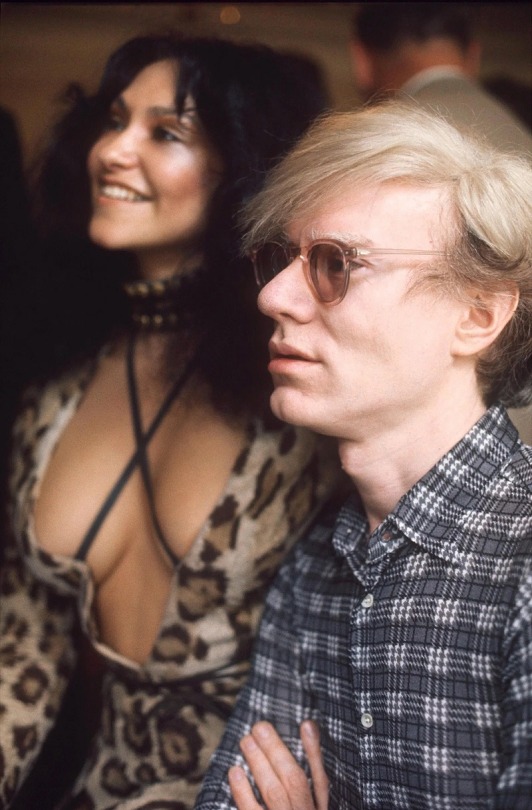

Andy Warhol with Geri Miller, who played Josie in his play Pork, during a news conference at the Ritz Hotel in London, 1971.
79 notes
·
View notes
Text
ALMOST LIVESTREAM: JAMIE BAUM with Carmen Staaf, Tony Scherr, and Jeff Hirschfield, MEZZROW’S, 4 APRIL 2024, first set
What really caught my eye about this show was that, as she was in July, Allison Miller was slated to join her Science Fair bandmate Carmen Staaf accompanying this composer/flautist. Miller didn’t play in July nor this week, but JAMIE BAUM led a strong set of interesting compositions, mostly hers but a Kenny Wheeler opener and a Geri Allen are indicative of her taste.
It was not a blowing set and, interesting as the flute is, particularly the alto one she played twice, it probably can’t carry as set as the sole horn. Maybe with better microphones in a different room, but flute is a doubling instrument for Dolphy, Lateef, even Tabackin good for a tune or two a set a recording. Her playing served the tunes but, alas, I didn’t find it as compelling as the compositions which were smart and intricate.
Staaf did swing and rather more than I remembered her, so she proved the tunes possibilities. So did Tony Scherr who found places to inject his big tone, harmonic ideas, and pulse. Jeff Hirschfield didn’t get a solo or trades, a reflection of the character of the tunes. He listened well and made smart contributions, again befitting the tunes. It is not his fault he is not Allison Miller whom I have to imagine would have been just as circumspect. But she is a force.
Miller would have been part of this little run of drummer centric gigs—Vinnie Sperazza with Kate Cosco and Herlin Riley at Jazz St Louis, plus I’m on the lookout for a recent Billy Mintz Quartet gig with Tony Malaby. Drummers always matter but I’ve been paying particular attention lately.
0 notes
Link
Learning the Language of Addiction Counseling (5th Edition) – eBook PDF FULLY REVISED, COMPREHENSIVE, AND PRACTICAL BOOK OF THE THEORY AND PRACTICE OF ADDICTION COUNSELING Learning the Language of Addiction Counseling, Fifth Edition introduces mental health professionals and students to the field of addiction counseling and helps them acquire the knowledge and develop the skills needed to counsel individuals who are caught in the destructive cycle of addiction. Drawing from her years of experience in working in the addiction counseling field as a counselor, trainer and educator, Geri Miller provides an engaging, balanced overview of the major theoretical foundations and clinical best practices in the field. Fully updated, the fifth edition offers a compassionate accountability, practice-oriented counseling framework and features: A research-based clinical application approach to addiction counseling that practitioners can turn to for fundamental, practical, clinical guidelines. Revised chapters that reflect important changes in research and practice, including new assessment instruments and new and expanded treatments. Additional case studies, interactive exercises, key points and other resources that facilitate the integration of knowledge into practice. A new chapter of “Supervision and Mentoring”. Revised “Personal Reflections” section at the beginning of each chapter that provide an invaluable, unique perspective on the author's view of addiction counseling. Updated and expanded Instructor Resources that include brief video clips, PowerPoint slides, test bank questions for each chapter, and sample syllabi. From assessment and diagnosis of addiction to preparing for certification and licensure as an addiction counseling professional, this comprehensive book covers essential components required to work as a professional in the field of addiction counseling. NOTE: The product only includes the eBook Learning the Language of Addiction Counseling 5e in PDF. No access codes are included.
0 notes
Text
13 notes
·
View notes
Link
Learning the Language of Addiction Counseling (5th Edition) – eBook PDF FULLY REVISED, COMPREHENSIVE, AND PRACTICAL BOOK OF THE THEORY AND PRACTICE OF ADDICTION COUNSELING Learning the Language of Addiction Counseling, Fifth Edition introduces mental health professionals and students to the field of addiction counseling and helps them acquire the knowledge and develop the skills needed to counsel individuals who are caught in the destructive cycle of addiction. Drawing from her years of experience in working in the addiction counseling field as a counselor, trainer and educator, Geri Miller provides an engaging, balanced overview of the major theoretical foundations and clinical best practices in the field. Fully updated, the fifth edition offers a compassionate accountability, practice-oriented counseling framework and features: A research-based clinical application approach to addiction counseling that practitioners can turn to for fundamental, practical, clinical guidelines. Revised chapters that reflect important changes in research and practice, including new assessment instruments and new and expanded treatments. Additional case studies, interactive exercises, key points and other resources that facilitate the integration of knowledge into practice. A new chapter of “Supervision and Mentoring”. Revised “Personal Reflections” section at the beginning of each chapter that provide an invaluable, unique perspective on the author's view of addiction counseling. Updated and expanded Instructor Resources that include brief video clips, PowerPoint slides, test bank questions for each chapter, and sample syllabi. From assessment and diagnosis of addiction to preparing for certification and licensure as an addiction counseling professional, this comprehensive book covers essential components required to work as a professional in the field of addiction counseling. NOTE: The product only includes the eBook Learning the Language of Addiction Counseling 5e in PDF. No access codes are included.
0 notes